Towards Resilient and Sustainable Rail and Road Networks: A Systematic Literature Review on Digital Twins
Abstract
:1. Introduction
1.1. Background
1.1.1. Sustainability and Resilience of Rail and Road Networks
- Robustness: the ability of assets or asset systems to withstand a given level of stress/demand without suffering degradation or loss of function;
- Redundancy: the extent to which assets or asset systems are substitutable, capable of meeting functional needs in case of disruption, degradation, or loss of function;
- Resourcefulness: the ability to identify problems, establish priorities, and mobilise material (i.e., monetary, physical, technological, and informational) and human resources during asset recovery, to meet established priorities and achieve goals;
- Rapidity: the capacity to meet priorities and achieve goals in a timely manner to contain losses, maximise functionality recovery, and avoid future disruptions.
1.1.2. Digital Twin Concept
“A DT is an integrated multiphysics, multiscale, probabilistic simulation of an as-built vehicle or system that uses the best available physical models, sensor updates, fleet history, etc., to mirror the life of its corresponding flying twin. (…). In addition to the backbone of high-fidelity physical models, the DT integrates sensor data from the vehicle’s on-board integrated vehicle health management (IVHM) system, maintenance history and all available historical/fleet data obtained using data mining and text mining. (…) the digital twin continuously forecasts the health of the vehicle/system, the remaining useful life and the probability of mission success. The systems on board the DT are also capable of mitigating damage or degradation by recommending changes in mission profile to increase both the life span and the probability of mission success.”
1.2. Significance of the Study and Motivation
1.3. Terms and Definitions
- Each DT serves a specific purpose in a given context, thus allowing the definition of the resources required to support it and to assess the benefits and value derived from it;
- A DT includes a digital representation of the physical asset or asset system and its context (the complexity and accuracy of the digital representation should suit the available resources and the DT purpose);
- Because real-time data alone do not add value to the decision-making process, the DT should have some form of data analytics (Artificial Intelligence, Big Data, etc.) to generate insights for the user (or the twin itself) and to support the asset management decision-making process. As stated by Shafto et al. [34], other information sources such as physical models and available records can be integrated into the DT. The DT might incorporate predictive or simulation capabilities, depending on the purpose of the DT;
- DTs might have different integration scales, from single asset or component level to asset system or network level [37]. Higher levels of asset aggregation in the DT imply higher potential benefits but also higher complexity (data security, interoperability, etc.);
- DTs might have different levels of development and complexity, but always include some sort of automated data transfer—i.e., take the form of “digital shadows” or “digital twins” according to the classification proposed by Kritzinger et al. [45]—at least from the physical asset to the digital asset. The data refresh rate needs to be adequate for the purpose.
1.4. Research Objectives and Paper Organization
- Identify knowledge gaps and research opportunities;
- Perceive how DT can impact the resilience and sustainability of rail and road infrastructures.
2. Methodology
2.1. Rationale
2.2. Protocol and Registration
2.3. Eligibility Criteria
2.4. Information Sources
2.5. Search
2.6. Study Selection
2.6.1. First Phase (“Screening”)
- articles without developments or contributions within the rail and road network scope (see the asset scope presented in Section 2.5);
- all manufacturing-focused papers, due to the reasons discussed in Section 2.5;
- all articles without available abstracts.
2.6.2. Second Phase (“Eligibility”)
2.6.3. Third Phase (“Snowballing”)
2.7. Data Collection Process
2.8. Data Items
2.9. Risk of Bias
3. Bibliometric Analysis Results
3.1. Annual Publications
3.2. Countries
3.3. Subject Areas
3.4. Paper Types and Networks
3.5. Lifecycle Delivery
4. Discussion
4.1. The Impact of DT on the Resilience of Rail and Road Networks
4.2. The Impact of DT on the Sustainability of Rail and Road Networks
5. Conclusions
Author Contributions
Funding
Institutional Review Board Statement
Informed Consent Statement
Data Availability Statement
Acknowledgments
Conflicts of Interest
References
- Costin, A.; Adibfar, A.; Hu, H.; Chen, S. Building Information Modeling (BIM) for transportation infrastructure—Literature review, applications, challenges, and recommendations. Autom. Constr. 2018, 94, 257–281. [Google Scholar] [CrossRef]
- Sustainable Mobility for All. Global Mobility Report—Tracking Sector Performance; Sustainable Mobility for All: Washington, DC, USA, 2017; ISBN 978-0-692-95670-0. [Google Scholar]
- Berdica, K. An introduction to road vulnerability: What has been done, is done and should be done. Transp. Policy 2002, 9, 117–127. [Google Scholar] [CrossRef]
- Rezvani, S.; Almeida, N.; Silva, M.J.; Duarte, M. Enhancing Urban Resilience Evaluation Systems Through Automated Rational And Consistent Decision-Making Simulations. Sustain. Cities Soc. 2022, 78, 103612. [Google Scholar] [CrossRef]
- WCED. Report of the World Commission on Environment and Development: “Our Common Future”; World Commission on Environment and Development, United Nations: New York, NY, USA, 1987. [Google Scholar]
- Bruneau, M.; Chang, S.; Eguchi, R.; Lee, G.; O’Rourke, T.; Reinhorn, A.; Shinozuka, M.; Tierney, K.; Wallace, W.; von Winterfeldt, D. A framework to quantitatively assess and enhance the seismic resilience of communities. Earthq. Spectra 2003, 19, 733–752. [Google Scholar] [CrossRef] [Green Version]
- Bruneau, M.; Reinhorn, A. Exploring the concept of seismic resilience for acute care facilities. Earthq. Spectra 2007, 23, 41–62. [Google Scholar] [CrossRef] [Green Version]
- ISO 55000; ISO 55000:2014—Asset Management—Overview, Principles and Terminology. International Organization for Standardization: Geneva, Switzerland, 2014. Available online: https://www.iso.org/standard/55088.html (accessed on 7 December 2021).
- Almeida, N.M.; Silva, M.J.F.; Salvado, F.; Rodrigues, H.; Maletic, D. Risk-Informed Performance-Based Metrics for Evaluating the Structural Safety and Serviceability of Constructed Assets against Natural Disasters. Sustainability 2021, 13, 5925. [Google Scholar] [CrossRef]
- ISO 31000; ISO 31000:2018—Risk Management—Guidelines. International Organization for Standardization: Geneva, Switzerland, 2018. Available online: https://www.iso.org/standard/65694.html (accessed on 7 December 2021).
- IEA. The Future of Rail—Opportunities for Energy and the Environment; International Energy Agency: Paris, France, 2019; Available online: https://www.iea.org/reports/the-future-of-rail (accessed on 9 December 2021).
- Taleb, N. The Black Swan: The Impact of the Highly Improbable, 1st ed.; Random House: New York, NY, USA, 2007; ISBN 978-1-4000-6351-2. [Google Scholar]
- OECD. Transport Bridging Divides; OECD Urban Studies; OECD Publishing: Paris, France, 2020. [Google Scholar] [CrossRef]
- European Union. Statistical Pocketbook 2020—EU Transport in Figures; European Union: Brussels, Belgium, 2020; Available online: https://data.europa.eu/doi/10.2832/919583 (accessed on 9 December 2021).
- Council Directive 2008/114/EC of 8 December 2008 on the Identification and Designation of European Critical Infrastructures and the Assessment of the Need to Improve Their Protection. Available online: http://data.europa.eu/eli/dir/2008/114/oj (accessed on 5 March 2022).
- OECD. OECD Regional Outlook 2019: Leveraging Megatrends for Cities and Rural Areas; OECD Publishing: Paris, France, 2019. [Google Scholar] [CrossRef]
- Shim, C.; Dang, S.; Lon, S.; Jeon, C. Development of a bridge maintenance system for prestressed concrete bridges using 3D digital twin model. Struct. Infrastruct. Eng. 2019, 15, 1319–1332. [Google Scholar] [CrossRef]
- Ye, S.; Lai, X.; Bartoli, I.; Aktan, A.E. Technology for condition and performance evaluation of highway bridges. J. Civ. Struct. Health Monit. 2020, 10, 573–594. [Google Scholar] [CrossRef]
- ARTBA. Bridge Conditions Report; American Road & Transportation Builders Association: Washington, DC, USA, 2020; Available online: https://artbabridgereport.org/reports/2021-ARTBA-Bridge-Report.pdf (accessed on 17 November 2021).
- CIRC. Monitoring the State of Canada’s Core Public Infrastructure: The Canadian Infrastructure Report Card. 2019. Available online: http://canadianinfrastructure.ca/downloads/canadian-infrastructure-report-card-2019.pdf (accessed on 17 November 2021).
- Kaewunruen, S.; Sresakoolchai, J.; Ma, W.; Phil-Ebosie, O. Digital Twin Aided Vulnerability Assessment and Risk-Based Maintenance Planning of Bridge Infrastructures Exposed to Extreme Conditions. Sustainability 2021, 13, 2051. [Google Scholar] [CrossRef]
- Maletič, D.; Almeida, N.; Gomišček, B.; Maletič, M. Understanding motives for and barriers to implementing asset management system: An empirical study for engineered physical assets. Prod. Plan. Control 2020, 12, 9097. [Google Scholar] [CrossRef]
- Vieira, J.; Cabral, M.; Almeida, N.; Silva, J.; Covas, D. Novel methodology for efficiency-based long-term investment planning in water infrastructures. Struct. Infrastruct. Eng. 2020, 16, 1654–1668. [Google Scholar] [CrossRef]
- Chester, M.V.; Allenby, B.R. Perspective: The Cyber Frontier and Infrastructure. IEEE Access 2020, 8, 28301–28310. [Google Scholar] [CrossRef]
- Saad, A.; Faddel, S.; Mohammed, O. IoT-Based Digital Twin for Energy Cyber-Physical Systems: Design and Implementation. Energies 2020, 13, 4762. [Google Scholar] [CrossRef]
- Callcut, M.; Agliozzo, J.-P.C.; Varga, L.; McMillan, L. Digital Twins in Civil Infrastructure Systems. Sustainability 2021, 13, 11549. [Google Scholar] [CrossRef]
- Lopez, J.; Rubio, J.E.; Alcaraz, C. Digital Twins for Intelligent Authorization in the B5G-Enabled Smart Grid. IEEE Wirel. Commun. 2021, 28, 48–55. [Google Scholar] [CrossRef]
- Marai, O.E.; Taleb, T.; Song, J. Roads Infrastructure Digital Twin: A Step Toward Smarter Cities Realization. IEEE Netw. 2021, 35, 136–143. [Google Scholar] [CrossRef]
- Jones, D.; Snider, C.; Nassehi, A.; Yon, J.; Hicks, B. Characterising the Digital Twin: A systematic literature review. CIRP J. Manuf. Sci. Technol. 2020, 29, 36–52. [Google Scholar] [CrossRef]
- Tao, F.; Zhang, H.; Liu, A.; Nee, A.Y.C. Digital Twin in Industry: State-of-the-Art. IEEE Trans. Ind. Inform. 2019, 15, 2405–2415. [Google Scholar] [CrossRef]
- Lim, K.Y.H.; Zheng, P.; Chen, C.-H. A state-of-the-art survey of Digital Twin: Techniques, engineering product lifecycle management and business innovation perspectives. J. Intell. Manuf. 2020, 31, 1313–1337. [Google Scholar] [CrossRef]
- Camposano, J.C.; Smolander, K.; Ruippo, T. Seven Metaphors to Understand Digital Twins of Built Assets. IEEE Access 2021, 9, 27167–27181. [Google Scholar] [CrossRef]
- Grieves, M.; Vickers, J. Digital Twin: Mitigating Unpredictable, Undesirable Emergent Behavior in Complex Systems. In Transdisciplinary Perspectives on Complex Systems, 1st ed.; Kahlen, F.-J., Flumerfelt, S., Alves, A., Eds.; Springer: Cham, Switzerland, 2017; pp. 85–113. [Google Scholar] [CrossRef]
- Shafto, M.; Conroy, M.; Doyle, R.; Glaessgen, E.; Kemp, C.; LeMoigne, J.; Wang, L. Technology Area 11: Modeling, Simulation, Information Technology and Processing Roadmap; NASA Office of Chief Technologist: Washington, DC, USA, 2010. Available online: https://www.nasa.gov/pdf/501321main_TA11-MSITP-DRAFT-Nov2010-A1.pdf (accessed on 30 November 2021).
- Al-Ali, A.R.; Gupta, R.; Batool, T.Z.; Landolsi, T.; Aloul, F.; Nabulsi, A.A. Digital Twin Conceptual Model within the Context of Internet of Things. Future Internet 2020, 12, 163. [Google Scholar] [CrossRef]
- Liu, Z.; Shi, G.; Zhang, A.; Huang, C. Intelligent Tensioning Method for Prestressed Cables Based on Digital Twins and Artificial Intelligence. Sensors 2020, 20, 7006. [Google Scholar] [CrossRef] [PubMed]
- Lamb, K. Principle-Based Digital Twins: A Scoping Review; Centre for Digital Built Britain: Cambridge, UK, 2019. [Google Scholar] [CrossRef]
- Jiang, F.; Ding, Y.; Song, Y.; Geng, F.; Wang, Z. An architecture of lifecycle fatigue management of steel bridges driven by Digital Twin. Struct. Monit. Maint. 2021, 8, 187–201. [Google Scholar] [CrossRef]
- Broo, D.; Schooling, J. A Framework for Using Data as an Engineering Tool for Sustainable Cyber-Physical Systems. IEEE Access 2021, 9, 22876–22882. [Google Scholar] [CrossRef]
- Zhang, L.; Chen, X.; Zhou, W.; Cheng, T.; Chen, L.; Guo, Z.; Han, B.; Lu, L. Digital Twins for Additive Manufacturing: A State-of-the-Art Review. Appl. Sci. 2020, 10, 8350. [Google Scholar] [CrossRef]
- Warke, V.; Kumar, S.; Bongale, A.; Kotecha, K. Sustainable Development of Smart Manufacturing Driven by the Digital Twin Framework: A Statistical Analysis. Sustainability 2021, 13, 10139. [Google Scholar] [CrossRef]
- Liu, M.; Fang, S.; Dong, H.; Xu, C. Review of digital twin about concepts, technologies, and industrial applications. J. Manuf. Syst. 2021, 58, 346–361. [Google Scholar] [CrossRef]
- Kochan, A. Digital Twin Concept of the ECTS application. J. Transp. Eng. 2020, 131, 87–98. [Google Scholar] [CrossRef]
- Chen, L.; Xie, X.; Lu, Q.; Parlikad, A.K.; Pitt, M.; Yang, J. Gemini Principles-Based Digital Twin Maturity Model for Asset Management. Sustainability 2021, 13, 8224. [Google Scholar] [CrossRef]
- Kritzinger, W.; Karner, M.; Traar, G.; Henjes, J.; Sihn, W. Digital Twin in manufacturing: A categorical literature review and classification. IFAC-PapersOnLine 2018, 51, 1016–1022. [Google Scholar] [CrossRef]
- Macchi, M.; Roda, I.; Negri, E.; Fumagalli, L. Exploring the role of Digital Twin for Asset Lifecycle Management. IFAC-PapersOnLine 2018, 51, 790–795. [Google Scholar] [CrossRef]
- Negri, E.; Fumagalli, L.; Macchi, M. A Review of the Roles of Digital Twin in CPS-based Production Systems. Procedia Manuf. 2017, 11, 939–948. [Google Scholar] [CrossRef]
- Machl, T.; Donaubauer, A.; Kolbe, T.H. Planning Agricultural Core Road Networks based on a Digital Twin of the Cultivated Landscape. J. Digit. Landsc. Archit. 2019, 4-2019, 316–327. [Google Scholar] [CrossRef]
- Mohammadi, M.; Rashidi, M.; Mousavi, V.; Karami, A.; Yu, Y.; Samali, B. Quality Evaluation of Digital Twins Generated Based on UAV Photogrammetry and TLS: Bridge Case Study. Remote Sens. 2021, 13, 3499. [Google Scholar] [CrossRef]
- Shevlyugin, M.V.; Korolev, A.A.; Korolev, A.O.; Aleksandrov, I.A. A Digital Model of a Traction Substation with Two Types of Current. Russ. Electr. Eng. 2018, 89, 540–545. [Google Scholar] [CrossRef]
- Ariyachandra, M.F.; Brilakis, I. Detection of Railway Masts in Air-Borne LiDAR Data. J. Constr. Eng. Manag. 2020, 146, 04020105. [Google Scholar] [CrossRef]
- Kampczyk, A.; Dybeł, K. The Fundamental Approach of the Digital Twin Application in Railway Turnouts with Innovative Monitoring of Weather Conditions. Sensors 2021, 21, 5757. [Google Scholar] [CrossRef]
- Lu, R.; Brilakis, I.K. Digital twinning of existing reinforced concrete bridges from labelled point clusters. Autom. Constr. 2019, 105, 102837. [Google Scholar] [CrossRef]
- López, C.E.B. Real-time event-based platform for the development of digital twin applications. J. Adv. Manuf. Technol. 2021, 116, 835–845. [Google Scholar] [CrossRef]
- Yu, G.; Zhang, S.; Hu, M.; Wang, Y. Prediction of Highway Tunnel Pavement Performance Based on Digital Twin and Multiple Time Series Stacking. Adv. Civ. Eng. 2020, 2020, 8824135. [Google Scholar] [CrossRef]
- Sahal, R.; Alsamhi, S.H.; Brown, K.N.; O’Shea, D.; McCarthy, C.; Guizani, M. Blockchain-Empowered Digital Twins Collaboration: Smart Transportation Use Case. Machines 2021, 9, 193. [Google Scholar] [CrossRef]
- Kaewunruen, S.; Peng, S.; Phil-Ebosie, O. Digital Twin Aided Sustainability and Vulnerability Audit for Subway Stations. Sustainability 2020, 12, 7873. [Google Scholar] [CrossRef]
- Ozturk, G.B. Digital Twin Research in the AECO-FM Industry. J. Build. Eng. 2021, 40, 102730. [Google Scholar] [CrossRef]
- Sousa, B.; Arieiro, M.; Pereira, V.; Correia, J.; Lourenço, N.; Cruz, T. ELEGANT: Security of Critical Infrastructures With Digital Twins. IEEE Access 2021, 9, 107574–107588. [Google Scholar] [CrossRef]
- Heaton, J.; Parlikad, A.K.; Schooling, J.M. Design and development of BIM models to support operations and maintenance. Comput. Ind. 2019, 111, 172–186. [Google Scholar] [CrossRef]
- Yu, G.; Wang, Y.; Mao, Z.; Hu, M.; Sugumaran, V.; Wang, Y.K. A digital twin-based decision analysis framework for operation and maintenance of tunnels. Tunn. Undergr. Space Technol. 2021, 116, 104125. [Google Scholar] [CrossRef]
- Boje, C.; Guerriero, A.; Kubicki, S.; Rezgui, Y. Towards a semantic Construction Digital Twin: Directions for future research. Autom. Constr. 2020, 114, 103179. [Google Scholar] [CrossRef]
- Villa, V.; Naticchia, B.; Bruno, G.; Aliev, K.; Piantanida, P.; Antonelli, D. IoT Open-Source Architecture for the Maintenance of Building Facilities. Appl. Sci. 2021, 11, 5374. [Google Scholar] [CrossRef]
- PIARC. Road Related Data and How to Use It; PIARC—World Road Association: Paris, France, 2020; ISBN 978-2-84060-627-7. Available online: https://www.piarc.org/en/order-library/34599-en-Road%20Related%20Data%20and%20How%20to%20Use%20it (accessed on 10 August 2021).
- Patrício, H.; Almeida, N. A Common Risk Framework for Road and Rail Infrastructures. In Lecture Notes in Mechanical Engineering; Márquez, A.C., Komljenovic, D., Amadi-Echendu, J., Eds.; Springer: Cham, Switzerland, 2021; pp. 113–125. [Google Scholar] [CrossRef]
- Marocco, M.; Garofolo, I. Integrating disruptive technologies with facilities management: A literature review and future research directions. Autom. Constr. 2021, 131, 103917. [Google Scholar] [CrossRef]
- Kaiblinger, A.; Woschank, M. State of the Art and Future Directions of Digital Twins for Production Logistics: A Systematic Literature Review. Appl. Sci. 2022, 12, 669. [Google Scholar] [CrossRef]
- Lu, Y.; Liu, C.; I-Kai Wang, K.; Huang, H.; Xu, X. Digital Twin-driven smart manufacturing: Connotation, reference model, applications and research issues. Robot. Comput. Integr. Manuf. 2020, 61, 101837. [Google Scholar] [CrossRef]
- Cimino, C.; Negri, E.; Fumagalli, L. Review of digital twin applications in manufacturing. Comput. Ind. 2019, 113, 103130. [Google Scholar] [CrossRef]
- Vieira, J.; Clara, J.; Patrício, H.; Almeida, N.; Martins, J.P. Digital twins in asset management: Potential application use cases in rail and road infrastructures. In World Congress on Engineering Asset Management; Springer: Cham, Switzerland, 2021. [Google Scholar]
- Cheng, J.; Zhang, H.; Tao, F.; Juang, C. DT-II:Digital Twin enhanced Industrial Internet reference framework towards smart manufacturing. Robot. Comput. Integr. Manuf. 2020, 62, 101881. [Google Scholar] [CrossRef]
- Grieves, M. Virtually Intelligent Product Systems: Digital and Physical Twins. In Complex Systems Engineering: Theory and Practice; Flumerfelt, S., Schwartz, K.G., Mavris, D., Briceno, S., Eds.; American Institute of Aeronautics and Astronautics: Reston, VA, USA, 2019; Chapter 7; pp. 175–200. [Google Scholar] [CrossRef]
- Meža, S.; Pranjić, A.M.; Vezočnik, R.; Osmokrović, I.; Lenart, S. Digital Twins and Road Construction Using Secondary Raw Materials. J. Adv. Transp. 2021, 2021, 8833058. [Google Scholar] [CrossRef]
- Shelden, D. Cyber-Physical Systems and the Built Environment. Technol. Archit. Des. 2018, 2, 137–139. [Google Scholar] [CrossRef]
- Liberati, A.; Altman, D.; Tetzlaff, J.; Mulrow, C.; Gøtzsche, P.; Ioannidis, J.; Clarke, M.; Devereaux, P.; Kleijnen, J.; Moher, D. The PRISMA statement for reporting systematic reviews and meta-analyses of studies that evaluate healthcare interventions: Explanation and elaboration. BMJ 2009, 339, b2700. [Google Scholar] [CrossRef] [Green Version]
- Chadegani, A.A.; Salehi, H.; Yunus, M.; Farhadi, H.; Fooladi, M.; Farhadi, M.; Ebrahim, N.A. A Comparison between Two Main Academic Literature Collections: Web of Science and Scopus Databases. Asian Soc. Sci. 2013, 9, 18–26. [Google Scholar] [CrossRef] [Green Version]
- Scopus. Scopus Search Guide. Available online: http://schema.elsevier.com/dtds/document/bkapi/search/SCOPUSSearchTips.htm (accessed on 11 December 2021).
- Fuller, A.; Fan, Z.; Day, C.; Barlow, C. Digital Twin: Enabling Technologies, Challenges and Open Research. IEEE Access 2020, 8, 108952–108971. [Google Scholar] [CrossRef]
- Vatn, J. Industry 4.0 and real-time synchronization of operation and maintenance. In Safety and Reliability—Safe Societies in a Changing World, Proceedings of the ESREL 2018, Trondheim, Norway, 17–21 June 2018, 1st ed.; Haugen, S., Barros, A., van Gulik, C., Kongsvik, T., Vinnem, J.E., Eds.; Taylor & Francis Group: London, UK, 2018; pp. 681–686. ISBN 978-0-8153-8682-7. [Google Scholar]
- CDBB. Digital Twin Toolkit—Developing the Business Case for Your Digital Twin; Centre for Digital Built Britain: Cambridge, UK, 2021; Available online: https://digitaltwinhub.co.uk/files/file/62-digital-twin-toolkit/ (accessed on 29 November 2021).
- Commission Regulation (EC) No 851/2006 of 9 June 2006. Official Journal of the European Union, L 158/3, 10.6.2006. pp. 3–8. Available online: https://eur-lex.europa.eu/legal-content/EN/ALL/?uri=CELEX:32006R0851 (accessed on 11 December 2021).
- Dieter, J. Asset Management: Impact and Opportunity (Presentation). In Proceedings of the XXI Congreso Internacional de Mantenimiento y Gestión de Activos—CIMGA 2019, Bogotá, Colombia, 5 April 2019. [Google Scholar]
- Kumar, S.; Patil, S.; Bongale, A.; Kotecha, K.; Bongale, A.K.M.; Kamat, P. Demystifying Artificial Intelligence based Digital Twins in Manufacturing—A Bibliometric Analysis of Trends and Techniques. Libr. Philos. Pract. 2020, 4541. ISSN 1522-0222. Available online: https://digitalcommons.unl.edu/libphilprac/4541/ (accessed on 29 November 2021).
- Rocha, A.; Pinto, D.; Ramos, N.M.; Almeida, R.M.; Barreira, E.; Simões, M.L.; Martins, J.P.; Pereira, P.F.; Sanhudo, L. A case study to improve the winter thermal comfort of an existing bus station. J. Build. Eng. 2020, 29, 101123. [Google Scholar] [CrossRef]
- Dinis, F.M.; Sanhudo, L.; Martins, J.P.; Ramos, N.M.M. Improving project communication in the architecture, engineering and construction industry: Coupling virtual reality and laser scanning. J. Build. Eng. 2020, 30, 101287. [Google Scholar] [CrossRef]
- GFMAM. The Asset Management Landscape, 2nd ed.; The Global Forum on Maintenance and Asset Management: Toronto, ON, Canada, 2014; ISBN 978-0-9871799-2-0. [Google Scholar]
- Kim, J.; Kim, S.-A. Lifespan Prediction Technique for Digital Twin-Based Noise Barrier Tunnels. Sustainability 2020, 12, 2940. [Google Scholar] [CrossRef] [Green Version]
- Lu, Q.; Parlikad, A.K.; Woodall, P.; Xie, X.; Liang, Z.; Konstantinou, E.; Heaton, J.; Schooling, J. Developing a dynamic digital twin at building and city levels: A case study of the West Cambridge campus. J. Manag. Eng. 2019, 36, 05020004. [Google Scholar] [CrossRef]
- Sayyad, S.; Kumar, S.; Bongale, A.; Kamat, P.; Patil, S.; Kotecha, K. Data-Driven Remaining Useful Life Estimation for Milling Process: Sensors, Algorithms, Datasets, and Future Directions. IEEE Access 2021, 9, 110255–110286. [Google Scholar] [CrossRef]
- Mattioli, L.; Cardoso, A.; Lamounier, E. 2D–3D Spatial Registration for Remote Inspection of Power Substations. Energies 2020, 13, 6209. [Google Scholar] [CrossRef]
- Gitelman, L.D.; Kozhevnikov, M.V.; Kaplin, D.D. Asset management in grid companies using integrated diagnostic devices. Int. J. Energy Prod. Manag. 2019, 4, 230–243. [Google Scholar] [CrossRef]
- Marzouk, M.; Abdelaty, A. Monitoring thermal comfort in subways using building information modeling. Energy Build. 2014, 84, 252–257. [Google Scholar] [CrossRef]
- Milewski, S.; Cecot, W.; Orkisz, J. On-line monitoring aided evaluation of power line cable shapes. Eng. Struct. 2021, 235, 111902. [Google Scholar] [CrossRef]
- Meixedo, A.; Santos, J.; Ribeiro, D.; Calçada, R.; Todd, M. Online unsupervised detection of structural changes using train–induced dynamic responses. Mech. Syst. Signal Process. 2022, 165, 108268. [Google Scholar] [CrossRef]
- Steyn, W. Selected implications of a hyper-connected world on pavement engineering. Int. J. Pavement Res. 2020, 13, 673–678. [Google Scholar] [CrossRef]
- Love, P.E.D.; Matthews, J. The ‘How’ of Benefits Management for Digital Technology: From Engineering to Asset Management. Autom. Constr. 2019, 107, 102930. [Google Scholar] [CrossRef]
- Seilov, S.; Kuzbayev, A.; Seilov, A.; Shyngisov, D.; Goikhman, V.; Levakov, A.; Sokolov, N.; Zhursinbek, Y. The Concept of Building a Network of Digital Twins to Increase the Efficiency of Complex Telecommunication Systems. Complexity 2021, 2021, 9480235. [Google Scholar] [CrossRef]
- Napolitano, R.; Blyth, A.; Glisic, B. Virtual Environments for Visualizing Structural Health Monitoring Sensor Networks, Data, and Metadata. Sensors 2018, 18, 243. [Google Scholar] [CrossRef] [PubMed] [Green Version]
- Carvalho, R.; da Silva, A.R. Sustainability Requirements of Digital Twin-Based Systems: A Meta Systematic Literature Review. Appl. Sci. 2021, 11, 5519. [Google Scholar] [CrossRef]

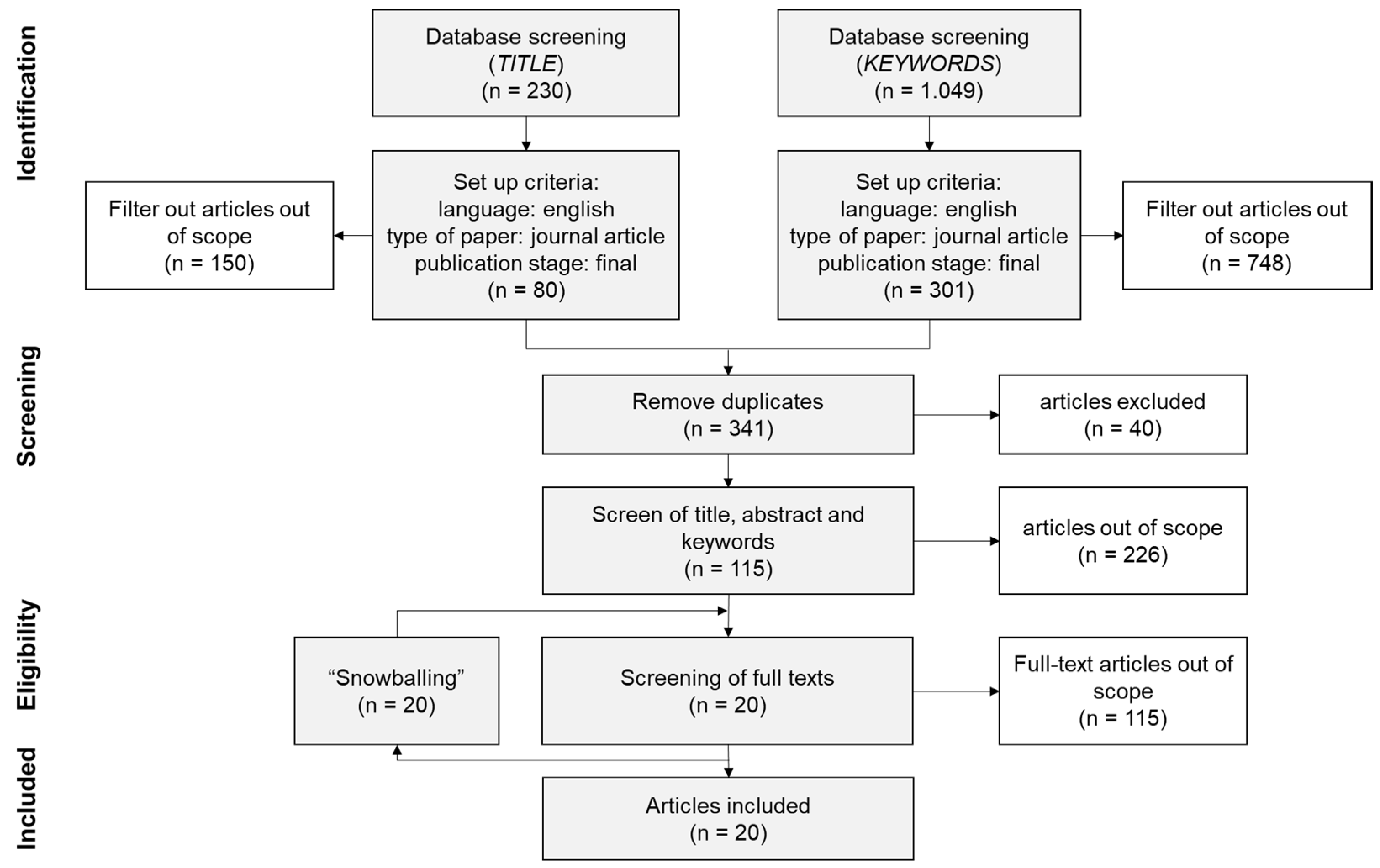

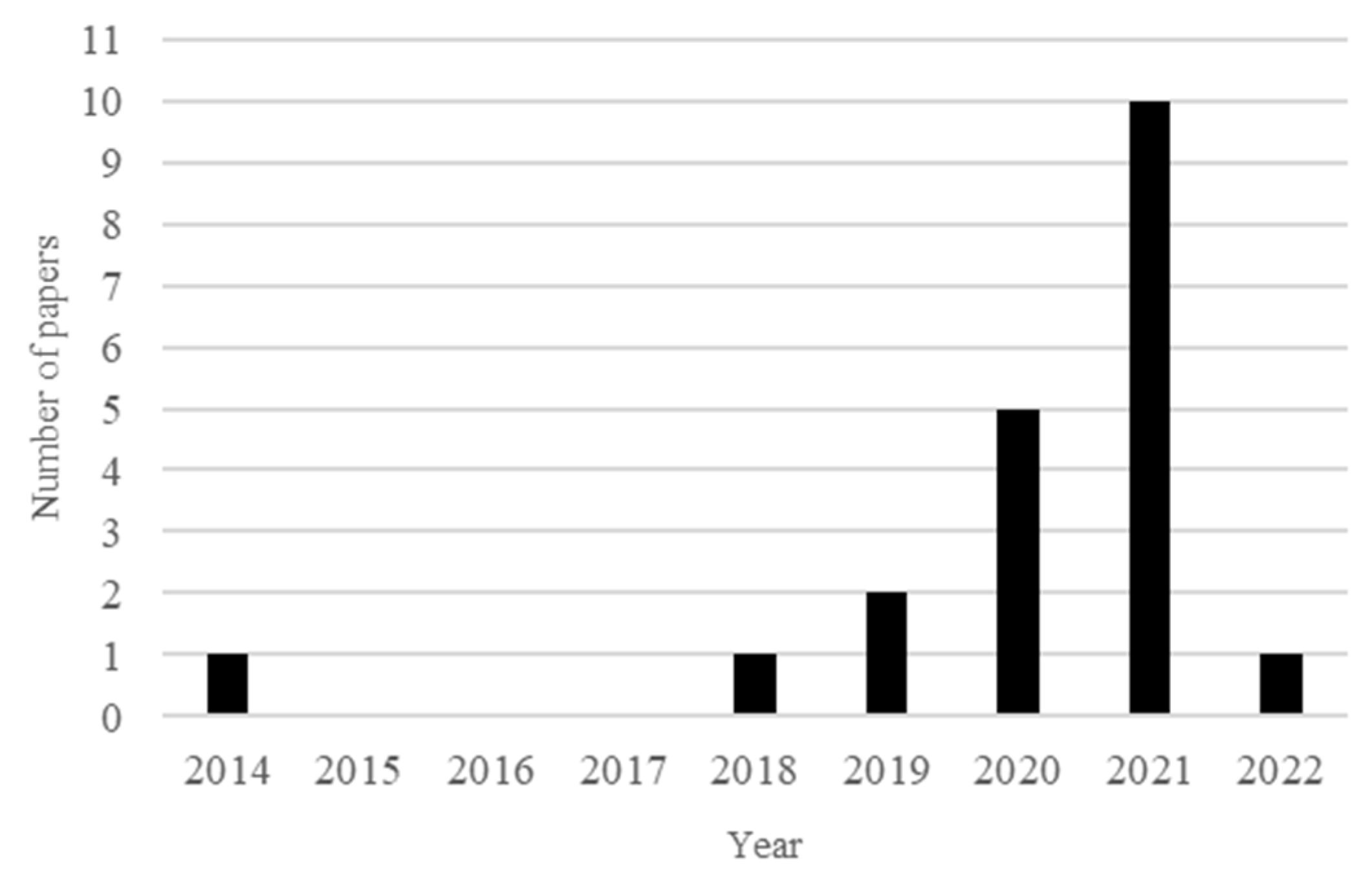
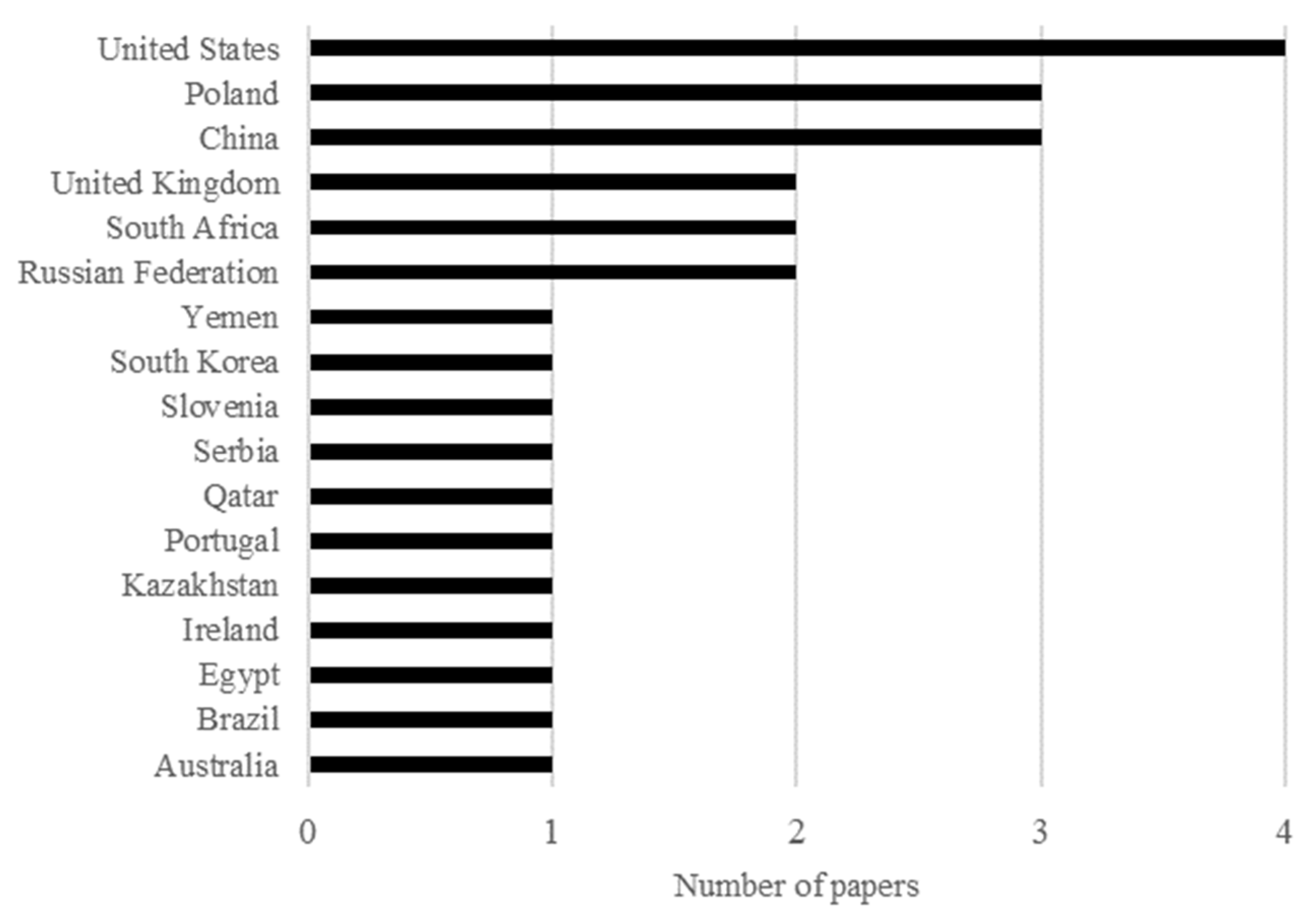
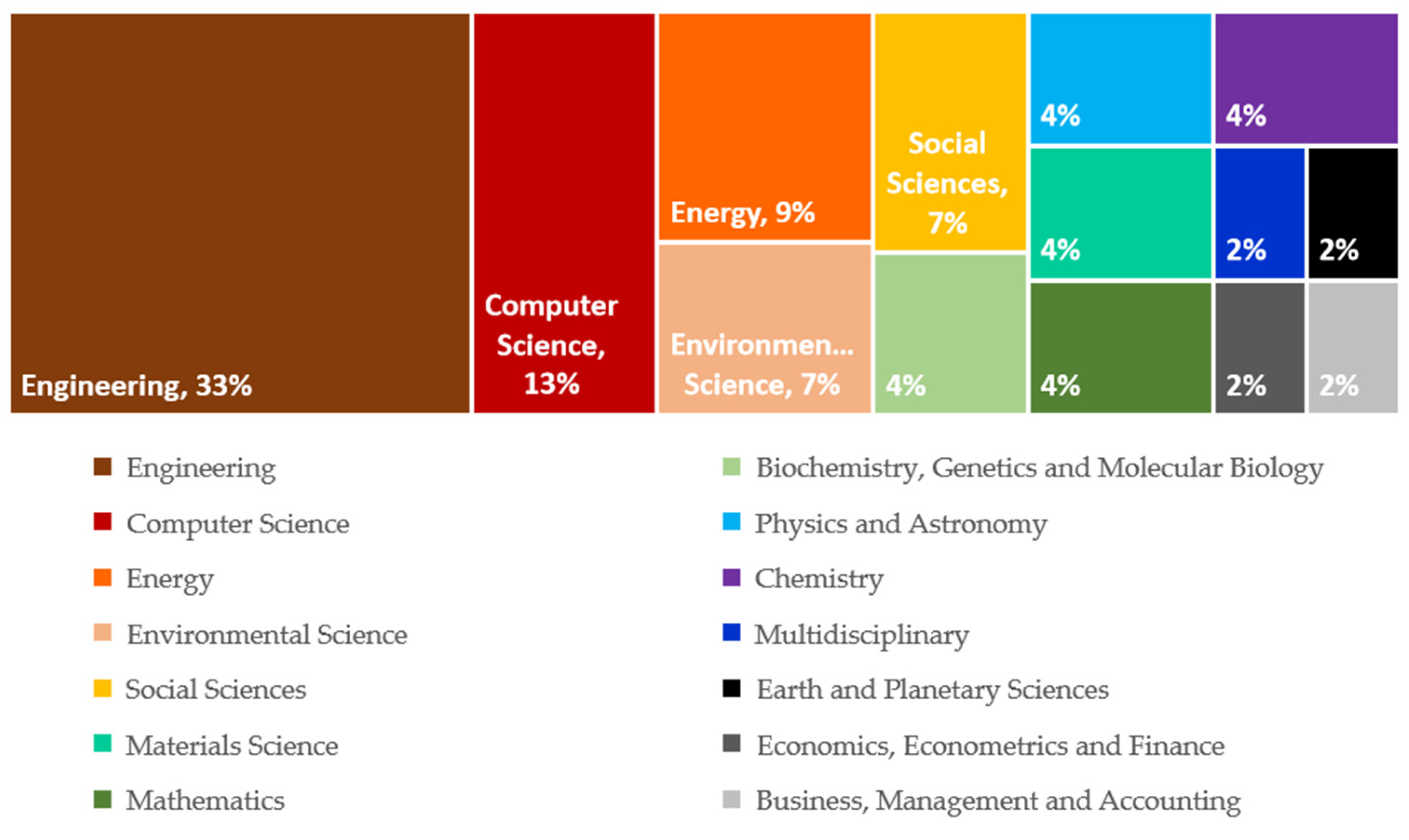
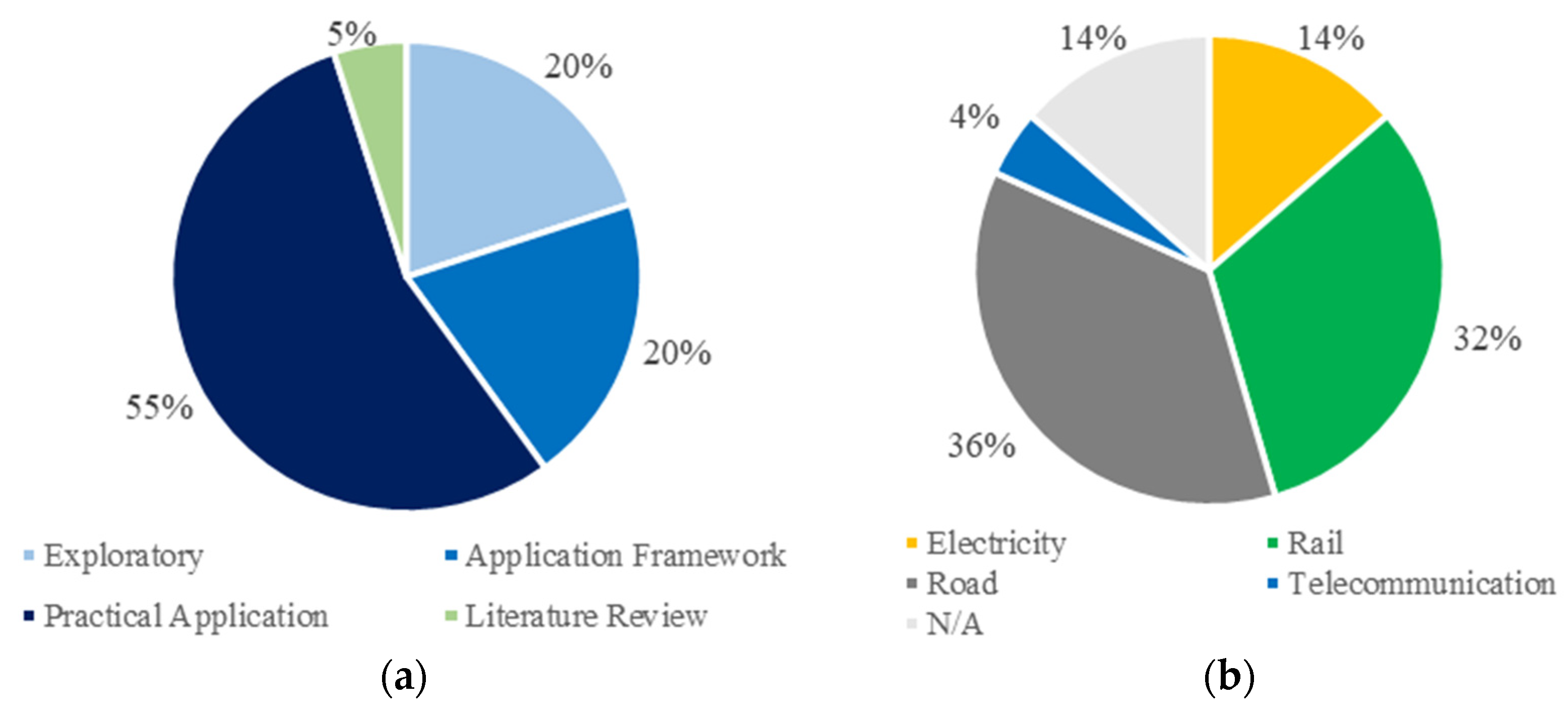
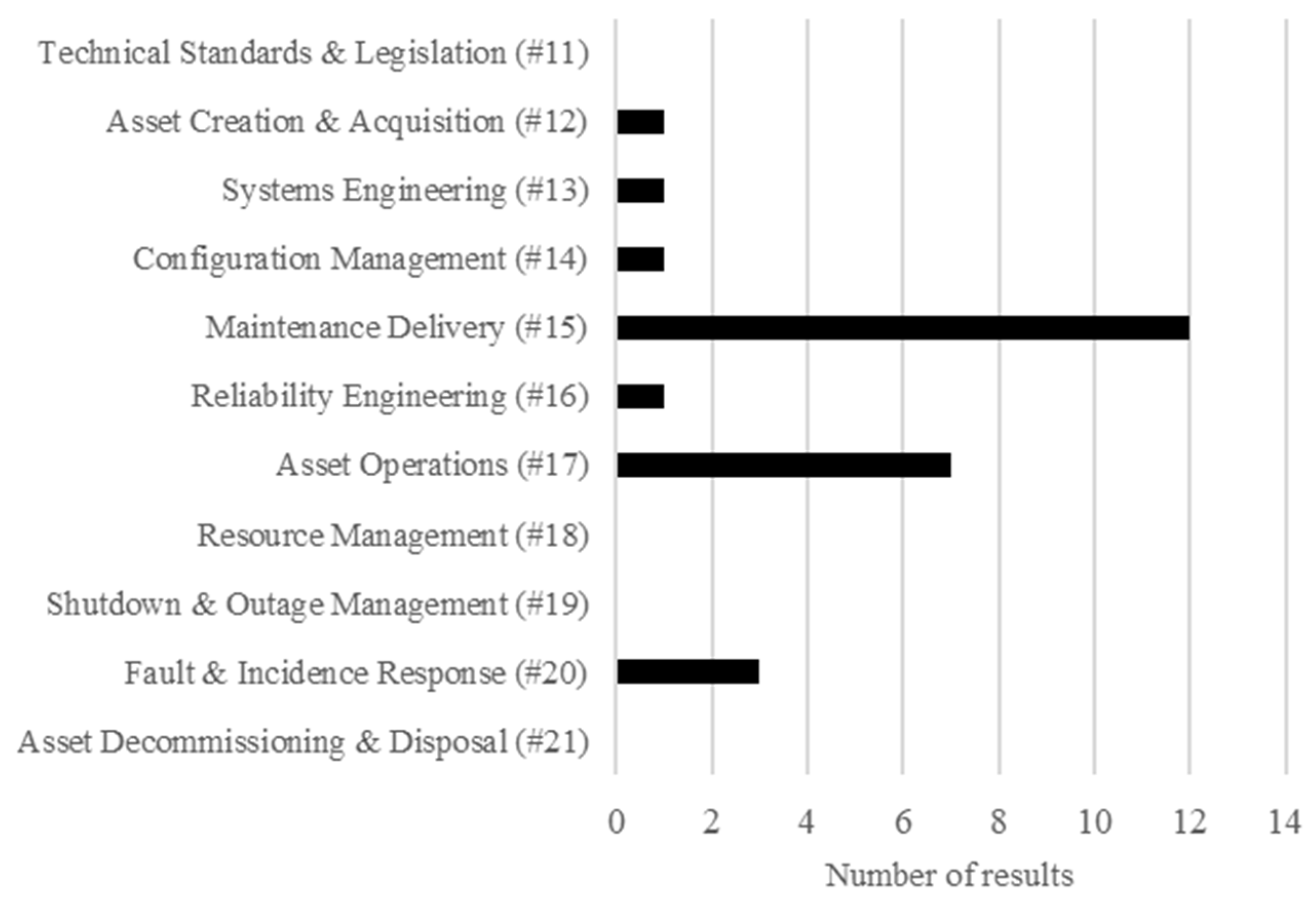
| Domain | Operators and Keywords Used |
|---|---|
| Article elements | TITLE/KEY |
| Digital Twin 1 | (“digital twin*” OR “as-is BIM” OR “virtual twin” OR “cyber*physical system*” OR “digital representation” OR “virtual representation” OR “digital counterpart” OR “digital replica”) |
| Operator | AND |
| Rail and road networks | (“rail*” OR “road*” OR “transport*” OR “asset management” OR “infrastructure” OR “track” OR “drainage” OR “culvert” OR “platform” OR “bridge” OR “tunnel” OR “overpass” OR “underpass” OR “retaining wall” OR “level crossing” OR “superstructure” OR “switches and crossings” OR “turnout” OR “access way” OR “signalling” OR “telecommunication” OR “electrical plant” OR “electric power” OR “*station” OR “catenary” OR “pavement” OR “highway” OR “traffic sign” OR “lighting” OR “toll” OR “building” OR “embankment” OR “escape ramp” OR “runaway*ramp” OR “automatic train protection”) |
| Operator | AND NOT |
| Exclusions | (“manufactur*”) |
| Operator | AND |
| Limitations of scope | (LIMIT-TO (SRCTYPE, “j”)) AND (LIMIT-TO (PUBSTAGE, “final”)) AND (LIMIT-TO (DOCTYPE, “ar”)) AND (LIMIT-TO (LANGUAGE, “English”)) |
| Sector | Infrastructure | No. of Papers | % |
|---|---|---|---|
| Buildings | Building | 48 | 44 |
| Transportation | Railway | 16 | 15 |
| Bridge | 15 | 14 | |
| Roadway | 10 | 9 | |
| Tunnel | 9 | 8 | |
| General | General | 6 | 6 |
| Energy | Electricity | 3 | 3 |
| Telecommunication | Telecommunication | 1 | 1 |
| Total | 108 | 100 |
| Ref. | Resilience Properties | Network | Observations | |||
|---|---|---|---|---|---|---|
| Robus. | Redun. | Resou. | Rapid. | |||
| [17] | X | Road | Continuous monitoring of road infrastructure conditions provides for early warning and indication of potential distress, enabling early remedial action. | |||
| [26] | X | X | X | X | General | Data collection through DTs helps to increase the efficiency, sustainability, and resilience of CISs, under normal conditions or following extreme events. Cybersecurity is an important and complex issue, especially in interconnected DTs. |
| [38] | X | X | Rail/Road | DT timely returns maintenance information, provides inputs for mitigation plans, analyses the impact of extreme loads on bridge performance, and issues early warnings. | ||
| [39] | X | X | - | DT can share information and focus on condition monitoring, asset performance management, or predictive maintenance. | ||
| [43] | X | X | Rail | The DT-EA allows monitoring the system state, running application diagnostics, and simulating and predicting various operational and failure scenarios. | ||
| [52] | X | X | Rail | The solution provides cyclic data for analysis and verification of the turnout’s condition. The solution might capture emergency conditions. | ||
| [55] | X | Road | The visual information service of the DT provides reliable data for preventive maintenance, which improves the efficiency of prediction and decision-making. | |||
| [56] | X | X | Rail | The sensor data and the DT simulations and predictions can capture the early fault, support track maintenance and deliver safe, reliable, and resilient service. DTs collaboration suffers from single failure due to attack and connection in a centralised manner, data interoperability, authentication, and scalability. | ||
| [61] | X | X | X | Road | The decision analysis method can help O&M managers to quickly analyse the fault cause and identify maintenance measures for the tunnel jet fans. | |
| [73] | X | X | Road | The DT continuously monitors the assets to support proactive maintenance and ensure mechanical stability, safety, economy, and environmental requirements. | ||
| [87] | X | X | Road | Real-time condition analysis and life prediction of NBTs enables timely asset replacement and resource procurement, increasing maintenance sustainability. | ||
| [90] | X | Electricity | Remote inspection of substation power switches avoids unnecessary operator travel and allows for quicker and cheaper reestablishment. | |||
| [91] | X | Electricity | An autonomous system performs diagnostic on power lines. The timely elimination of defects reduces failures and improves the reliability of the power supply. | |||
| [92] | X | X | Rail | The constant infrastructure monitoring improves the control of the HVAC system and the energy efficiency, while guaranteeing the comfort requirements. | ||
| [93] | X | X | Electricity | The online measured data are used in the analysis of power cable displacement and may be applied for maximising power cable capacity. | ||
| [94] | X | X | Rail | Condition is simulated with a bridge DT, which identifies structural damage before it becomes critical, enabling preventive actions and cost minimisation. | ||
| [95] | X | X | Road | The hyper-connected pavement environment allows for a continuous understanding of infrastructure conditions, leading to timely decision making. | ||
| [96] | X | X | - | IoT and a common data environment can reduce costs, improve maintenance productivity, and enhance the accuracy and quality of information. | ||
| [97] | X | X | X | Telecomm. | A network of DT avoids negative consequences when sharp increases occur in traffic, especially in emergency and destructive events. | |
| [98] | X | Rail/Road | The VT/IM environment provides interactive accessibility to information, which can help them identify and diagnose unusual bridge behaviours. | |||
Publisher’s Note: MDPI stays neutral with regard to jurisdictional claims in published maps and institutional affiliations. |
© 2022 by the authors. Licensee MDPI, Basel, Switzerland. This article is an open access article distributed under the terms and conditions of the Creative Commons Attribution (CC BY) license (https://creativecommons.org/licenses/by/4.0/).
Share and Cite
Vieira, J.; Poças Martins, J.; Marques de Almeida, N.; Patrício, H.; Gomes Morgado, J. Towards Resilient and Sustainable Rail and Road Networks: A Systematic Literature Review on Digital Twins. Sustainability 2022, 14, 7060. https://doi.org/10.3390/su14127060
Vieira J, Poças Martins J, Marques de Almeida N, Patrício H, Gomes Morgado J. Towards Resilient and Sustainable Rail and Road Networks: A Systematic Literature Review on Digital Twins. Sustainability. 2022; 14(12):7060. https://doi.org/10.3390/su14127060
Chicago/Turabian StyleVieira, João, João Poças Martins, Nuno Marques de Almeida, Hugo Patrício, and João Gomes Morgado. 2022. "Towards Resilient and Sustainable Rail and Road Networks: A Systematic Literature Review on Digital Twins" Sustainability 14, no. 12: 7060. https://doi.org/10.3390/su14127060
APA StyleVieira, J., Poças Martins, J., Marques de Almeida, N., Patrício, H., & Gomes Morgado, J. (2022). Towards Resilient and Sustainable Rail and Road Networks: A Systematic Literature Review on Digital Twins. Sustainability, 14(12), 7060. https://doi.org/10.3390/su14127060










